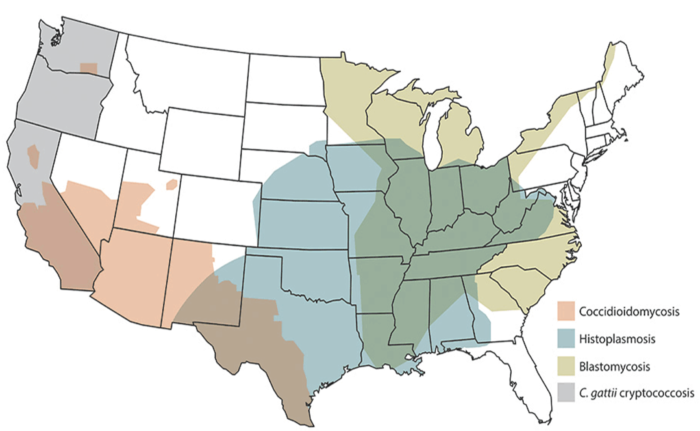General Fungal
Clinical Signs of General Fungal
Invasive fungal infections (IFIs) commonly include non-specific findings. Other more specific findings are also often present and can help guide diagnostic testing. Any IFI can affect any single organ or be multi-systemic, but patterns exist.
- Lethargy
- Anorexia
- Weight loss
- Fever unresponsive to antibiotics
Treatment And Testing
Early detection, diagnosis, and appropriate treatment lead to improved outcomes. Knowing geographic regions of the country where certain IFIs are enzootic can assist in diagnostic test selection.
General Fungal
Fungal antigens, fungal DNA, and anti-fungal antibodies can be used as non-invasive biomarkers for invasive fungal infections (IFIs). MiraVista Diagnostics (MVD) specializes in developing diagnostic tests to detect these biomarkers. These tests provide a rapid, cost-efficient alternative to invasive testing, often required otherwise to diagnose IFIs. Over the past 20 years MVD tests have revolutionized diagnosis and treatment monitoring of IFIs in animals. Use has been reported in many peer-reviewed publications.
Geographic location of enzootic invasive fungal infections (IFIs) is an important consideration. Cryptococcosis and aspergillosis, along with other invasive molds, occur anywhere in the U.S. Although infections can occur sporadically anywhere, IFIs due to dimorphic fungi (Blastomyces, Histoplasma, and Coccidioides) are found more commonly in predictable locations. The map below provides a rough estimate of enzootic regions.

Learn More About Diagnosing Invasive Fungal Infections
With many available tests, choosing the best test can be challenging. In some cases, a combination of tests for a specific pathogen is preferred. For others, sequential testing might be needed. Considering the overlap of clinical findings, and enzootic areas, testing for multiple fungal pathogens is appropriate in many cases.
- Signs of Invasive Fungal Infections
- Fungal Infection Panel Testing
- Performance of MVD Diagnostic Tests
- Invasive Fungal Infection Algorithms
- Review of Beta-D-Glucan Testing
- Cross-Reactivity for MVD Tests
- What if Antigen Test is Negative
